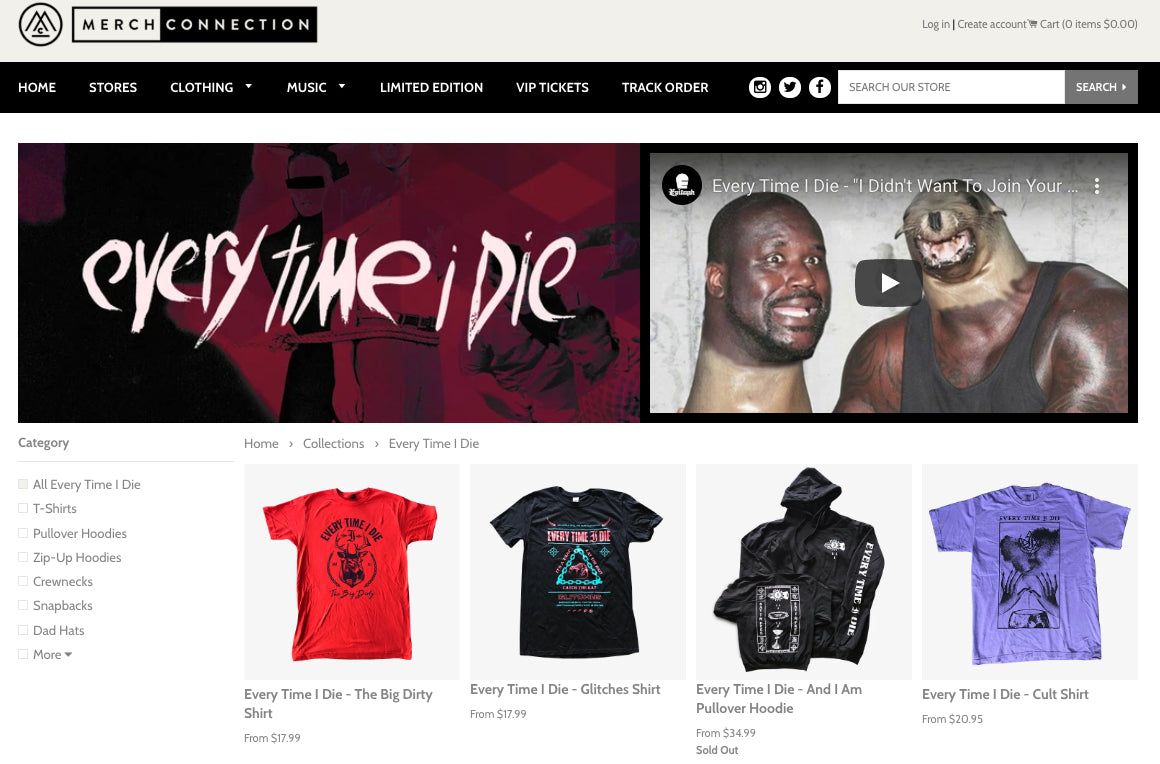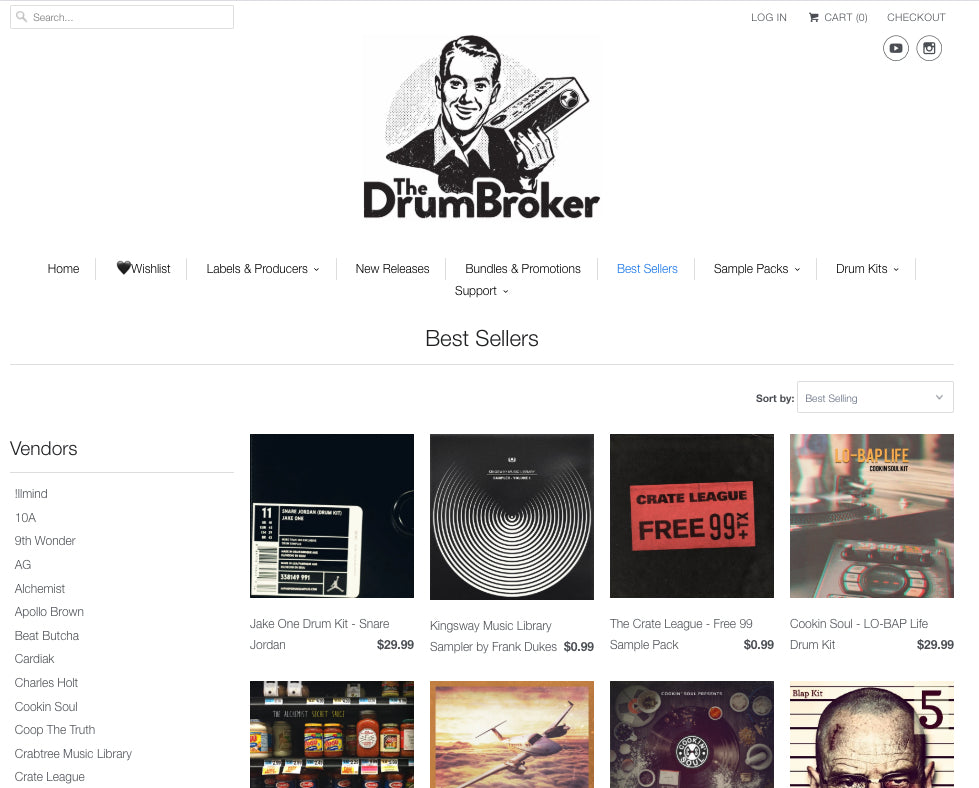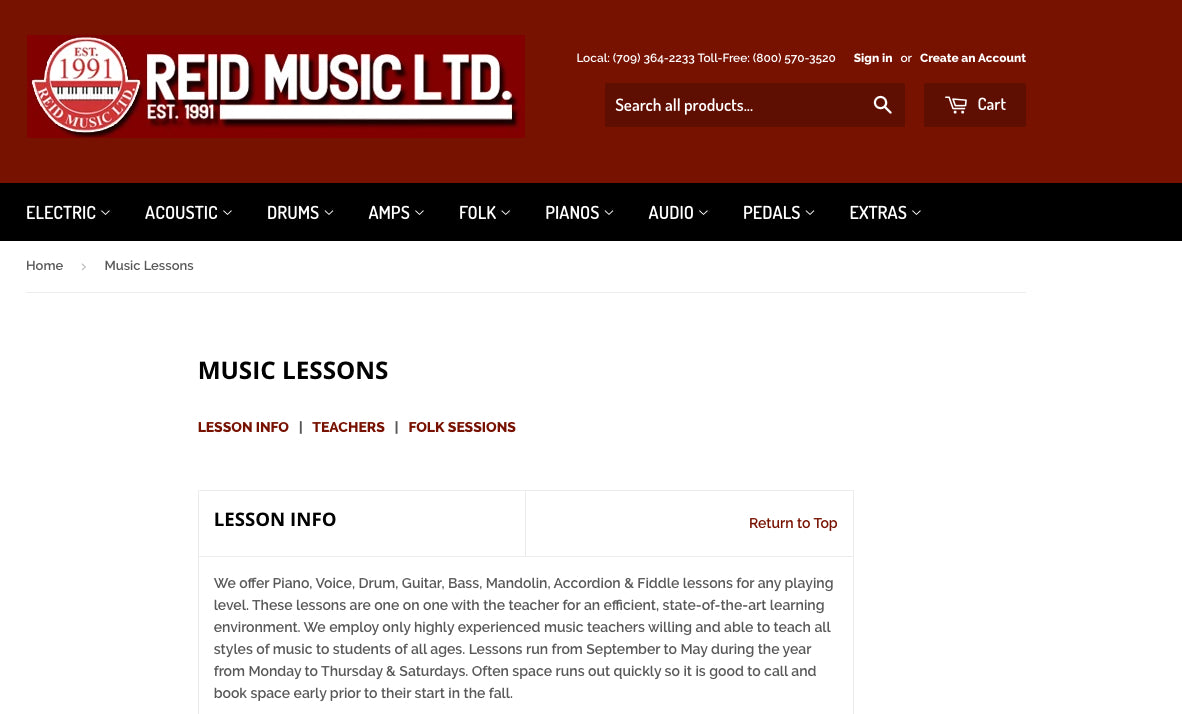If you love making music, you'll soon want to knowhow to make money as a musician.Whether it’s your full-time job or a lucrative side-gig, selling music is acreative way to make moneydoing something you love.
But what if the money’s not there? Selling your music doesn’t come with any guarantees. For a lot of musicians, the siren song of a profitable music career just isn’t worth the risk. Check our guide onhow to make money onlineto get started.
Making money from music isn’t easy, but it’s not impossible. By setting up diversified, automated revenue streams, musicians in 2020 are able to reduce the risk and take a chance on their dream career.
How to make money as a musician
- Earn streaming royalties through digital distribution
- Make money playing gigs
- Sell band merchandise online
- Collaborate with brands and other musicians
- Sell beats and samples
- Teach music classes and sell lessons
In the early stages of your music career, it’s crucial to have multiple revenue streams. Without the backing of a major record label, any single stream is unlikely to generate enough income for you to earn a living.Let’s go over the most common revenue streams artists use to monetize their music.
1. Earn streaming royalties through digital distribution
It’s important here to understand the difference between a streaming service and a distribution network:
- A streaming serviceis a platform people use to listen to music. The most popular are Spotify and Apple Music.
- A distribution networkdistributes and collects royalties from those streaming services.
Musicians don’t really have a choice when it comes to streaming services. Not even the biggest artists in the world areprotected from backlashwhen removing their music from popular streaming platforms.
It’s important that you stream your work on Spotify and Apple Music, the two largest, most globally available services. Other popular streaming services include Google Play, Amazon Music, and YouTube Music—plus genre-specific streaming services like BeatPort and JunoDownload, both of which cater to electronic music producers and fans.
How to find and select the right distribution network
Most distribution networks are able to send your music to all major streaming platforms, so this isn’t a major concern. However, there are significant differences in what services distribution networks offer, their pricing, and their royalty payments that are important to consider when you’re looking for your distribution service.
Let's go over some of the more common distribution networks.
1.Landr
Price:Plans start at $4/month
Pros:Provides access to all major streaming services and pays 100% of streaming royalties to the artist, making it one of the less expensive options.
Cons:Intrusive ads for Landr’s flagship product—itsmastering software—can become irritating, especially if you’re an experienced producer and have no use for the product.
2.TuneCore
Price:Plans start at $9.99/year for each single
Pros:Includes asuite of toolsto help artists prepare, promote, and sell their music. Also pays 100% of streaming royalties to the artist.
Cons:令人费解的定价结构。既然你收取on a per-song, per-year basis, there’s a higher risk of paying out more than you take in.
3.CD Baby
Price:Plans start at $9.95 for one single
Pros:IncludesCD and vinyl distribution, allowing you to easily sell physical copies of your music alongside digital downloads, as well as access toShow.co, a music marketing platform.
Cons:Pays a lower percentage of streaming royalties—91%—to the artist than other services.
4.Amuse
Price:Free
Pros:Most affordable. Very easy to use, and great for smaller artists. Amuse also doubles as arecord label, offering a chance of being discovered. Pays 100% of streaming royalties to the artist.
Cons:Only works via a mobile app with no desktop version. Features are very limited compared to other services.

2. Make money playing gigs
Playing live is one of the most profitable ways for musicians to make money. While the internet has made it possible to live stream music performances, there’s nothing that quite matches seeing one of your favorite artists perform in person.

How to find paid gigs for musicians
Playing live is not only a good way to generate income, but also one of the best ways to build an audience. Gig fans always win out over social media fans in terms of how valuable they are to your music career, since they’ve proven themselves willing to pay money to watch live music.
Assuming you haven’t bought a tour bus yet, you’ll need to find good local venues to play if you want to build an audience of real live music fans. One way of doing this is through gig-booking apps and websites likeReverbNation Gig Finder.
Gig-booking sites and platforms are more accessible, which means many of the shows tend to be corporate events targeted toward a broader audience. These performances can be very lucrative, but keep in mind that they’re less valuable in terms of building a sustainable audience.
Thinking long term, you want to build relationships with local venues in your “scene.” This is where yournetworkingskills will come in handy. Start small and find venues that are open to new acts.
Creating an electronic press kit
When you start reaching out to venues, there’s a chance they may ask for an electronic press kit (sometimes called an “EPK,” “promotional package,” or simply “press kit”).
An EPK is a digital collection of documents, videos, images, and, of course, your music. Venues use EPK’s to get a quick overview of your “brand.” You can create a press kit using design tools likeCanva,Adobe Spark, or thePressKitBuilder.

What to include in your electronic press kit:
- Links to your songs on Spotify and Apple Music
- Professional,high-resolution photography
- Links to your social media profiles
- A brief bio of your band—similar to anAbout Us page
- Music videos, if you have them, or any other media
- Press quotes or reviews
- Contact information

3. Sell band merchandise online
Selling band merchandise is one of the best ways to make extra money while working as a musician. With a fully automated merch store, you can generate income without taking any time away from writing and performing music.
Monetize your passion
Inspired to start your own merch brand? Learn how Shopify's tools empower musicians to connect with fans and monetize passion.
Learn moreHow to sell band merch online
With Shopify andprint on demand, you can set up a fully automated merchandise store in minutes. Start by deciding what products you want to sell. T-shirts are a must for bands, butprint-on-demand companiesoffer a wide range of products, from water bottles to canvas bags to home decor products like pillows:
- Create your designs:If you knowhow to design a logo, it’s easy to create a variety of unique designs for your band that can be printed on merchandise.
- Set up your store:Start your Shopify trialand set up your store. If you’ve never set up a Shopify store, we’ve got a ton ofresources to help you get started.
- Automate with a print-on-demand app:Withprint-on-demand apps, you can outsource the manufacturing,shipping, and logistics to a third-party company. Print-on-demand companies are paid a percentage of your sales, so you don’t need to pay for products until they’re sold.
This means that once you’ve set-up your store and products, you don’t have to do anything else. The print-on-demand company handles printing and shipping and is paid via a cut of your sales.
Free Webinar:
How to quickly start a profitable print-on-demand store
In our free 40-minute video workshop, we'll get you from product idea, to setting up an online store, to getting your first print-on-demand sale.
Some of the more popular print-on-demand apps that integrate with Shopify includePrintful,Teelaunch,Printify, andGooten.

4. Collaborate with brands and other musicians
A lot of musicians make extra money throughside hustles. There are a number of ways to make money through collaboration, depending on what kind of music you make and your specific music skills.
Freelance sites likeUpwork,Freelancer, and Twine have postings forvocalists,producers, and skilled instrumentalists. There are also a number of apps and platforms available for finding other musicians to collaborate with. Examples includeJambro,ProCollabs,AirGigs,Vampr,SoundBetter,Kompoz,Blend,Vocalizr,MelbossandAudiu.

5. Sell beats and samples
If you’re a producer, one common way tomake money onlineis byselling samplesand beats asdigital products. For some producers, this can even become their primary form of income. Selling samples and beats allows you to spend work hours making music, which is the primary benefit.
What to know about selling your beats online
- Mixing and mastering.Performers purchasing your beats will expect a level of technical quality. If you’ve never produced beats before, it’s not something you can pick up in an afternoon.
- Licensing.当表演者从你购买节拍,他们ctually purchasing a license to use that beat in their music. There aremany types of licenses, so make sure you understand what rights you’re giving up when selling your beat.
- Marketing.There are a ton of places to find beats to license, but performers tend to be very picky about what they’re looking for. This means that successfully selling beats online will be very dependent on your ability to find a niche and build a reputation on social media.

6. Teach music classes or sell lessons
Not all musicians are after global superstardom. For some, training the next generation of artists is a bigger accomplishment than playing the Super Bowl half-time show.
If you’re interested in training others,LectureOwlis a great place to apply to be a private music teacher. You can also create a music course on a number of online learning platforms.
Where to find teaching jobs for musicians
How to get started with music marketing
Playing shows and selling merch is all well and good, but you can’t make money from it if you don’t have an audience. That’s why understanding how to market your music is just as important as the ways you profit from it.
Let’s go over the essentials of marketing your music online.
1. Build a social media following
It’s important to make it easy for fans and venues to find you online. While streaming services are great for linking your music, a profile on Spotify isn’t enough to build an audience. This is why your social profile is so important.
If you’re just starting out, focus on growing your audience on social media. Then you can switch your focus to getting them out for shows.
There’s a lot to cover if you want to take a deep dive intosocial media marketing strategy, but in general, there are a couple of things to keep in mind as you’re building your profiles:
- Focus on building your audience over driving ticket and merch sales
- Keep your followers updated about new merch and live shows but, more importantly, keep them updated about you
- Show off your talent by posting new songs or works in progress or performing via live stream
- Engage with other musicians, brands, and bloggers in your scene by tagging them, commenting on their posts, and following their profiles
- Make interacting with your fans a priority—building personal connections with your audience will do more for brand awareness than anything else
Thanks John! ✌️https://t.co/A0tosGVLVw
— Walter Martin (@WaltRMartin)February 5, 2020
2. Submit your work to music blogs
Music blogs exist for all kinds of genres and are a great way to target a specific niche. They can also be local, which is additionally good for finding fans who will come to your shows.
许多音乐博客允许打开提交,但保持in mind that any blog with open submissions needs to wade through a lot of bad ones. This means you need to stand out.
Here’s how:
- Choose the right blog.Music blogs can cater to specific genres, so make sure you’ve familiarized yourself with the blog and that your music is a good fit.
- Follow the submission guidelines closely.Many blogs use automated systems that will filter out your submission if it doesn’t adhere to specifics.
- Include contact details.The more work the blog has to do to find you the less likely they will be to follow up.
Have your electronic press kit ready.You may be asked to attach this in your initial submission or in follow-up correspondence, so have it ready.
There are lots of blogs that accept open submissions from unsigned artists, but we’ve put together a list of some of the more popular ones. Keep in mind that many music blogs are genre-specific, so not every blog on this list will be a good fit for your music.
- A&R Factory
- HighClouds
- Earmilk
- Xune Mag
- Aquarium Drunkard
- FACT
- Kings of A&R
- Metal Injection
- Xttrawave
- IndiePulse Music
- Audiotox
3. Get on streaming playlists
Many streaming services offer playlists to users or algorithmic recommendations. Each service operates differently, so optimizing for specific streaming services may come with its own set of rules.
Since Apple Music and Spotify are the two most popular streaming services, they offer a higher degree of reach, so they’re the most important ones to optimize for.
How to get your music on Spotify playlists
Spotify has a suite of tools available to help artists optimize their profiles for the platform. Start byclaiming your profile. From there, you’ll be eligible for Spotify’s algorithmic playlists.
While there’s no guarantee that you’ll show up in people’s feeds, over time, as more listeners subscribe and save your music, you’ll become more likely to be seen.
Spotify’s algorithm evaluates your music based on your profile activity and its users’ activity on your profile.
- Release music often. Spotify values activity on your profile, so releasing music more frequently will increase your chances of appearing in playlists.
- Create your own playlists and include your music. Spotify allows any user to create playlists that are available to any other user of the platform. The more user-created playlists you’re on, the more likely you’ll be to appear in automated playlists.
- Ask friends to include your music on their playlists. This will also look good to Spotify’s algorithm.
- Link to your music on Spotify from your website and social accounts. Links to songs from external sources are considered high value by Spotify’s algorithm.
- Make good music. Easier said than done, but ultimately you won’t show up on people’s playlists if your music isn’t worth listening to.
4. Use visual content like music videos
Music videos are always a great promotional tool for music. There are plenty of ways to go aboutcreating video contentbut, for musicians specifically, there are a couple of things to keep in mind:
- Start with a strong video idea. If you’re envisioning your band playing in an empty warehouse, it might help to restart the brainstorming process.
- Prioritize uniqueness over professionalism. Your video needs to grab attention. Working with a full professional production team can get expensive quickly and doesn’t guarantee any social media views. A cheap but interesting music video is far more likely to go viral than an expensive boring one.
Start making money with your music
For musicians in the 2020s, it’s rare to collect revenue from a single source. Being able to fund your music career is about constructing a system of diverse revenue streams that are easily manageable so you can focus on what’s most important: making music.
Managing risk is all about how well you diversify. Dumping tons of money into your music career isn’t going to pay off if you don’t have enough revenue streams. But by understanding how you create those protective streams, you can focus on the most important thing: making kickass music.
Ilustration by Pete Ryan



